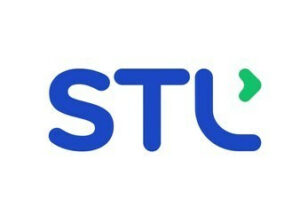With a career in information technology and other tech industries, it may seem like working eight hours at an office for five days a week is required. But with the Internet and innovations making it possible for experts from across the globe to form A-list teams regardless of geographical location, it is safe to say that the norm has already changed.
IT experts can now work from home – or anywhere they want, for that matter – while still enjoying the same perks office professionals in their line of work enjoy.
Want to know how? Whether you’re fresh out of college or someone who wants to switch from an office job to a work-from-anywhere setup, here are five simple steps you can follow to join a remote team in Dubai and begin your career as an online tech specialist:
Step #1: Define your goals.
You wouldn’t go on a drive without a destination in mind, so you shouldn’t begin searching for remote work in tech without any goals either.
Like most professionals, a tech expert who wants to work from home must first have a definitive set of goals in mind before they start looking for jobs.
Besides the vague “success and career growth” you’re probably thinking of right now, you should also decide on the following things:
- Dream job title: Some examples include senior front-end manager, full-stack developer, white-hat hacker, data analyst, etc.
- Ideal salary range: This may vary, depending on your dream job and preferred employment setup. When determining this, you also need to gauge what skills and credentials you can offer to potential employers.
- Desired benefits: Aim for remote work with similar benefits as office-based positions, especially if you’re planning to work online full-time. This can range from medical insurance coverage, performance incentives, training allowances, and so on.
- Preferred employment setup: Choose from part-time, freelance, or full-time. Some positions are also offered part-time initially until you’ve proven yourself ready for the full-time job.
You need to paint a clear picture in your head of what you want your work-from-home life to be like in relation to your profession.
For some people, this also entails describing their ideal company, complete with a set of criteria they want in an organisation. It also takes into account their mission, vision, and core values, as well as the established company culture.
Step #2: Identify your skills.
After defining your goals, the next thing you need to identify is your set of skills. Although the list is narrowed down since you’ll be focused more on your IT-related expertise, you still need to pinpoint the technical skills you’re good at.
This may include know-how on specific tools or programming languages like JavaScript and HTML, as well as some task-specific skills in technical support, cybersecurity, networks and systems, etc.
Of course, employers and clients seek more than technical skills. You must also have some soft skills that are crucial to your performance of your duties as a tech professional.
Among the commonly preferred soft skills you should include are:
- Critical thinking
- Problem-solving
- Project management
Proficiency in written and spoken English are also crucial if you want to become a globally competitive professional.
Step #3: Present your skills
Once you’ve listed down all your existing skills and added new ones you learned to upskill, the next thing you must do is to exhibit them. This can come in a variety of forms, including:
Resume or curriculum vitae
Like office jobs, applying for remote work also requires a document summarising your education, skills, and experience. This is where a resume and curriculum vitae (CV) come in handy.
A resume is a document consisting of one to two pages that feature key facts about your professional and educational background. It includes skills and experiences relevant to the position you’re applying for, making it ideal for job applications.
Meanwhile, a CV digs deeper into your entire career and has no limit in length. However, this document is usually intended for academic purposes, as it can be too lengthy for job applications.
Still, you should choose one of the two based on your unique circumstances.
Portfolio
Like artists, writers, and other professionals engaged in skill-specific fields, tech specialists need to have a portfolio to showcase their capabilities to potential employers or clients.
A well-crafted portfolio should:
- Contain finished projects, especially those you’re particularly proud of and want to highlight.
- Reflect your skills by featuring the quality of output of your work.
A technical portfolio must show prospective employers what you’re capable of, which means you must also consider the position you’re applying for when creating one.
For example, if you’re applying for a front-end developer position, your portfolio should also reflect a well-made user interface (UI) on top of the website’s usability. An excellent user experience is a massive plus, too.
Your portfolio must also feature the programming languages you’re good at and any other related skills that could be your edge over other applicants, like search engine optimisation (SEO).
Step #4: Create your online job platform profile
Several websites serve as a bridge between job applicants and employers seeking A-list talent. Create an account on as many of these platforms as you want. Just remember to be critical when choosing where to invest money (or decide whether you need to at all).
Jobseeker registrations usually come without extra fees, though certain websites offer additional perks for a cost. Try to look for those that don’t charge you anything during signup while still offering great benefits for job hunters.
Don’t limit yourself to just one or two platforms. The more you sign up for, the wider your reach will be, which also means you’ll have more job openings to choose from.
Step #5: Sell yourself in a convincing cover letter
Cover letters serve as your self-introduction to potential employers. It also allows you to “sell” yourself and convince them to hire you.
When writing cover letters, make sure you follow these best practices:
- Start strong. First impressions last, even in letters. Plus, the way you begin a letter determines whether your recipient will read it to the end.
- Keep it short and sweet. While you can use this space to highlight the best you can offer, make sure you write your cover concisely. Given the potential number of applicants and cover letters they get, it’s better to leave an impact on potential employers with just a few carefully chosen words.
- Use keywords. Keywords are often used to hasten the recruitment process. Both program algorithms and HR staff skim over applications in search for specific words or phrases, like the name of the skills required for the job, to speed up the initial stages of the recruitment.
- Personalise your letter. While it’s easier to copy and paste templates, it’s best to create some modifications to every cover letter you write that reflects who you’re writing to. Use the appropriate language, and don’t forget to research the name of the HR manager or person the cover letter should be addressed to.
Land Your Dream Job
After going through the steps presented in this article, you’re now ready to proceed with your job hunt. Remember everything you’ve learned here when narrowing down your options and going through application processes to increase your chances of landing your dream job.







